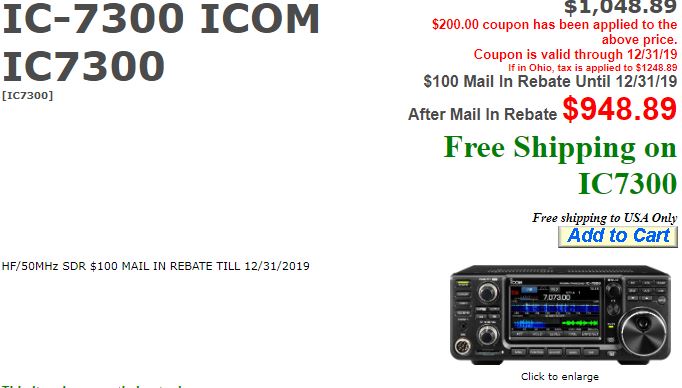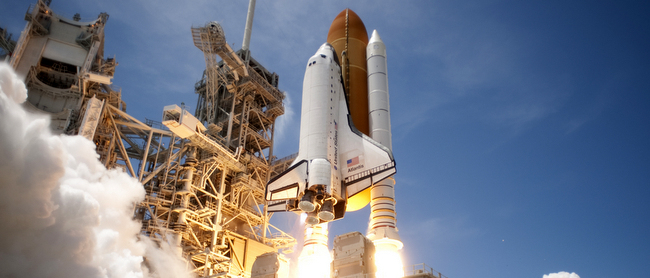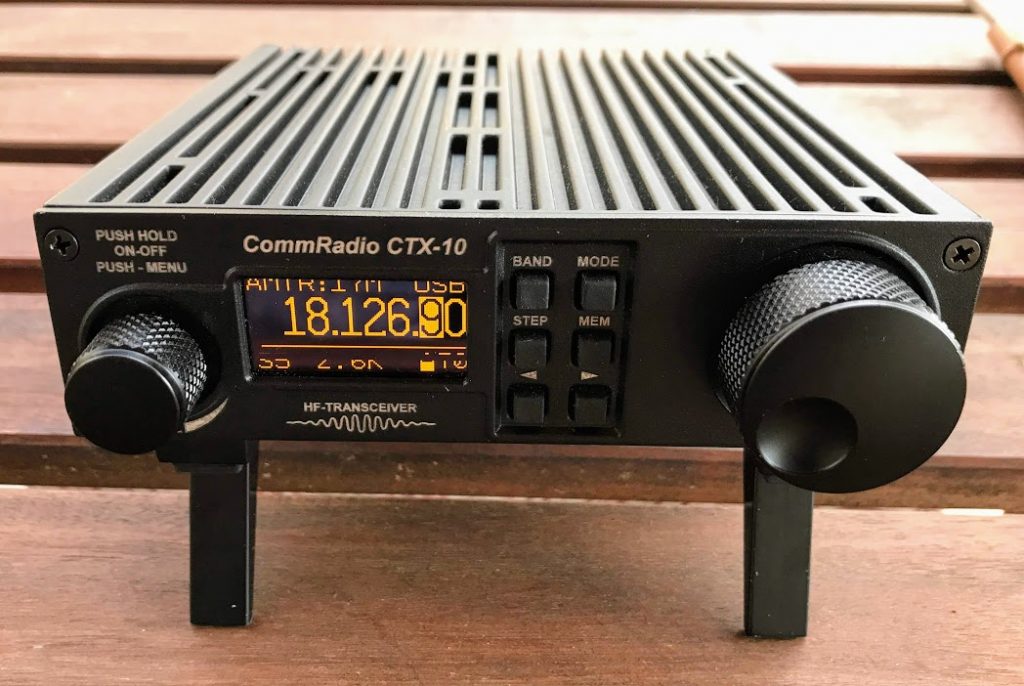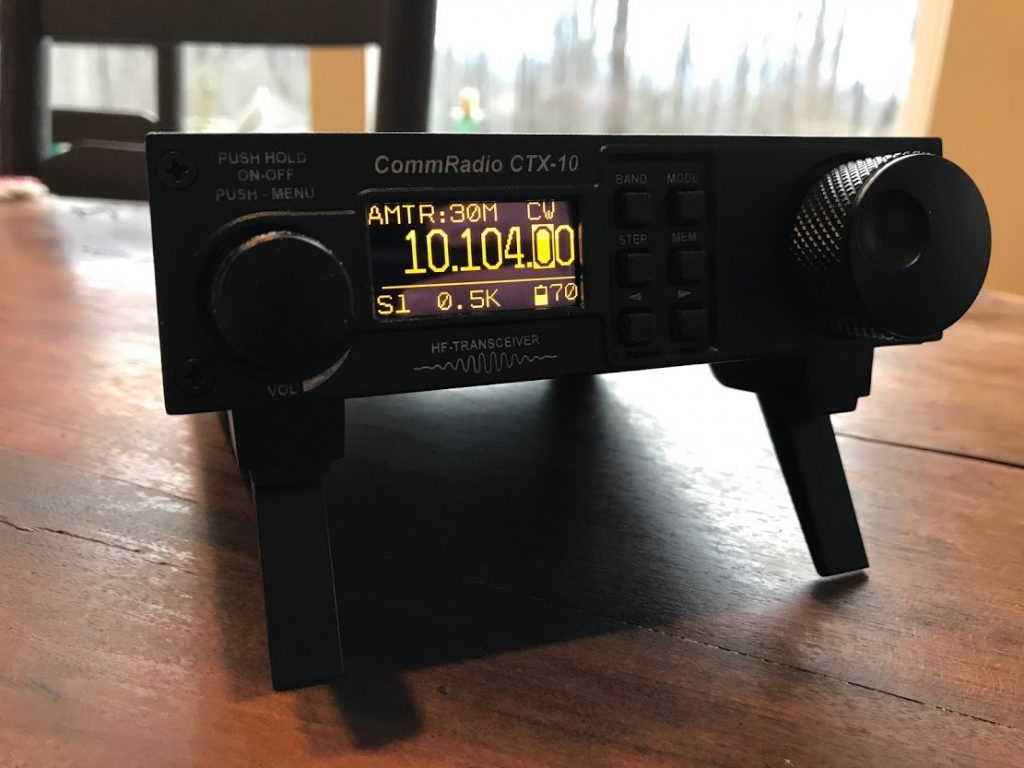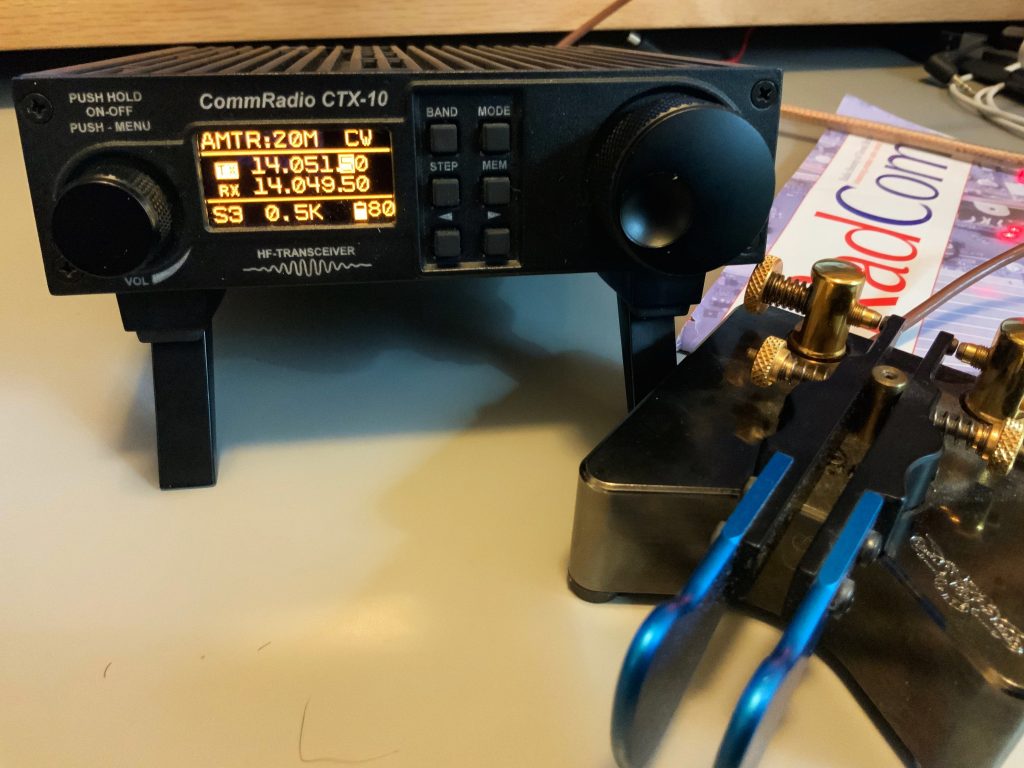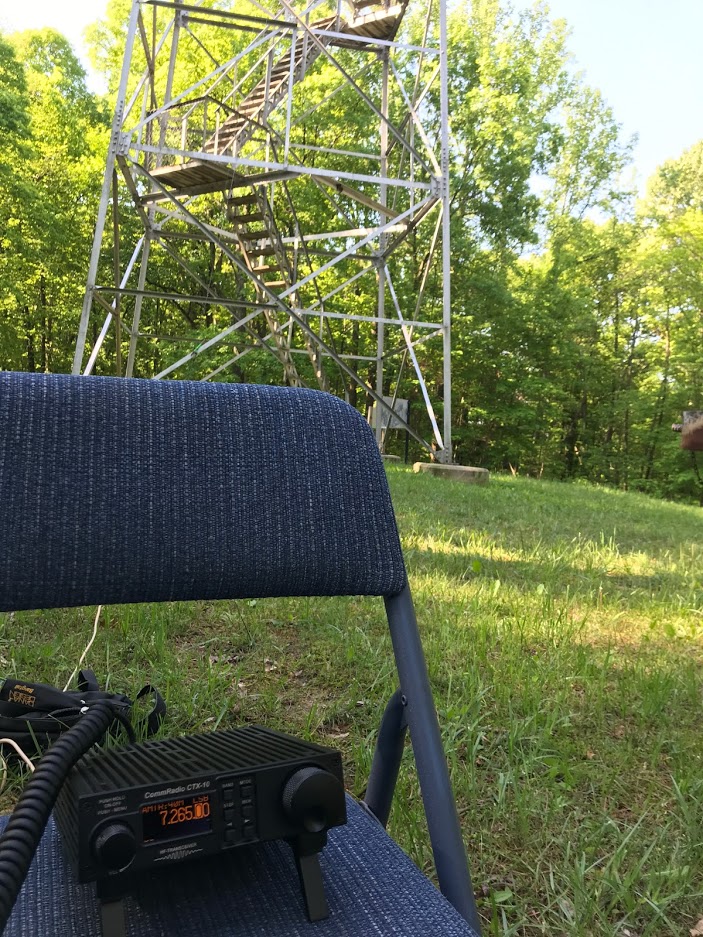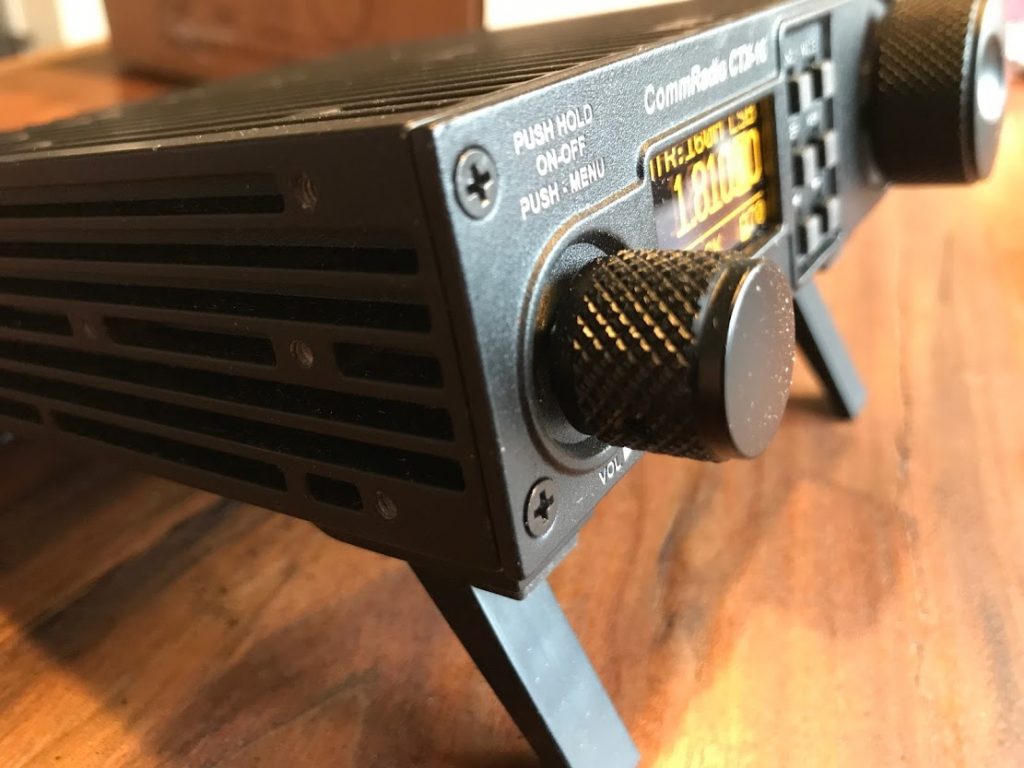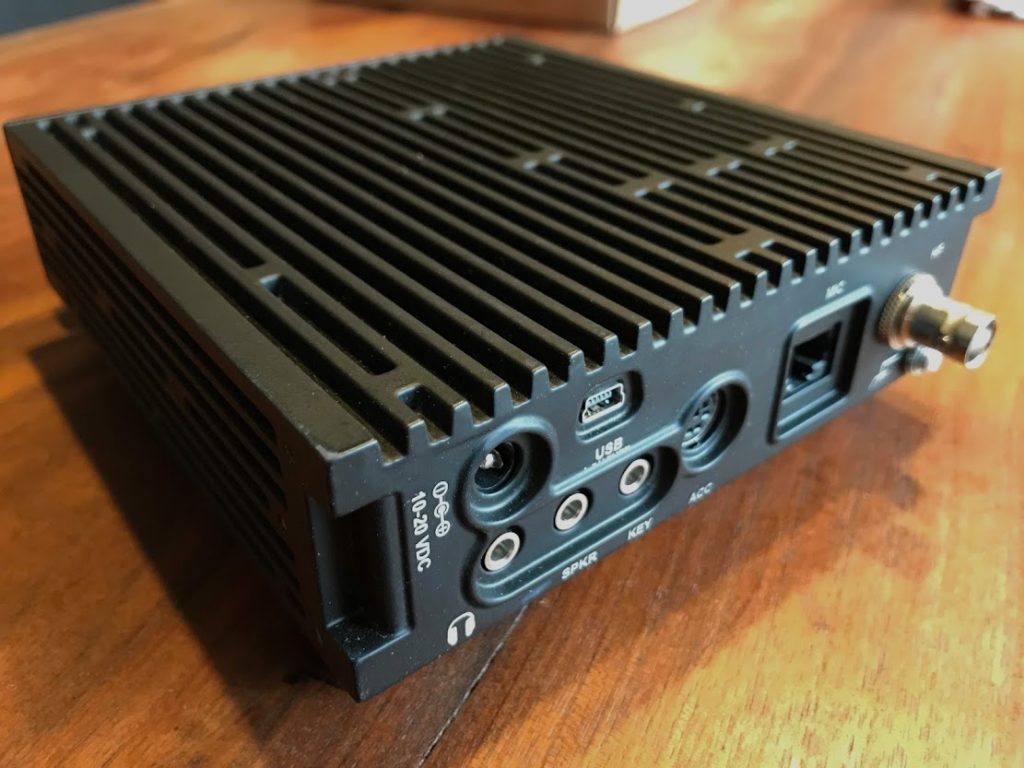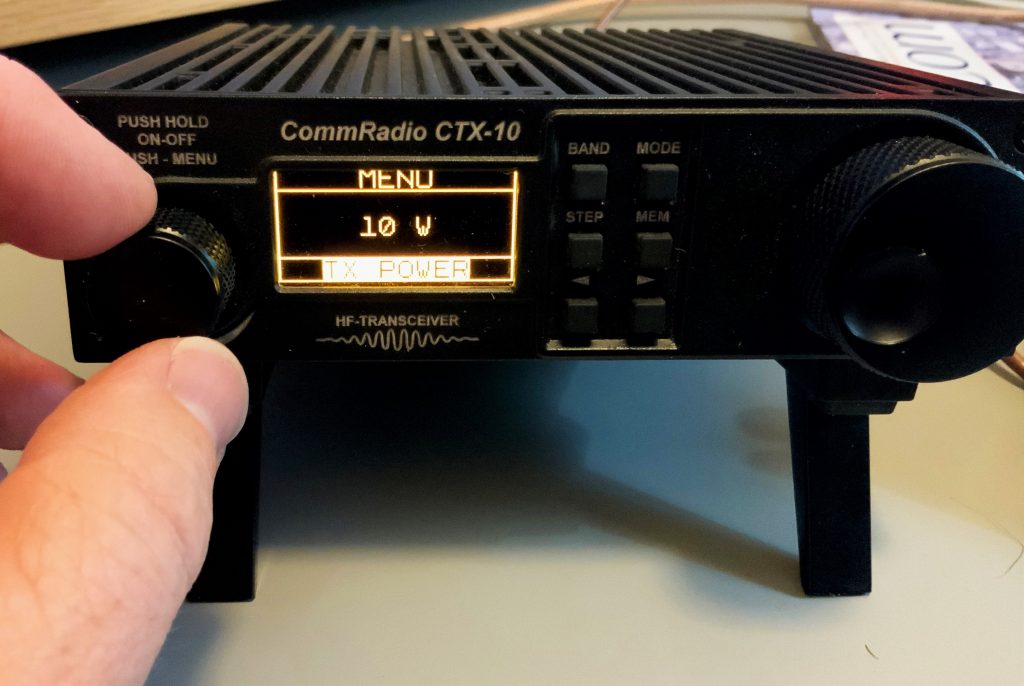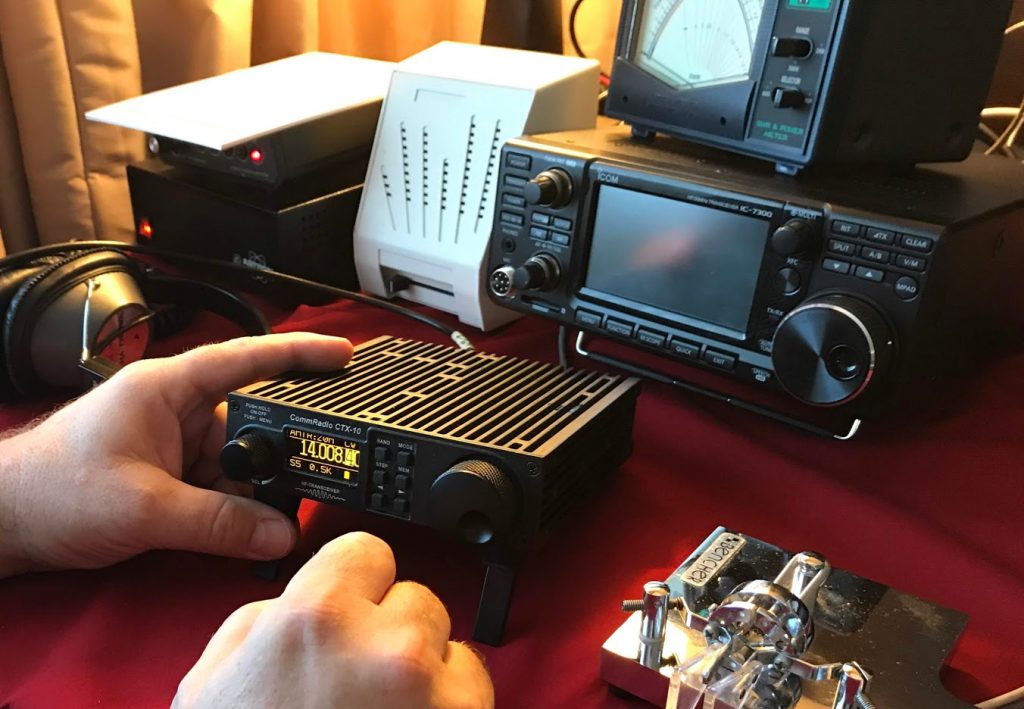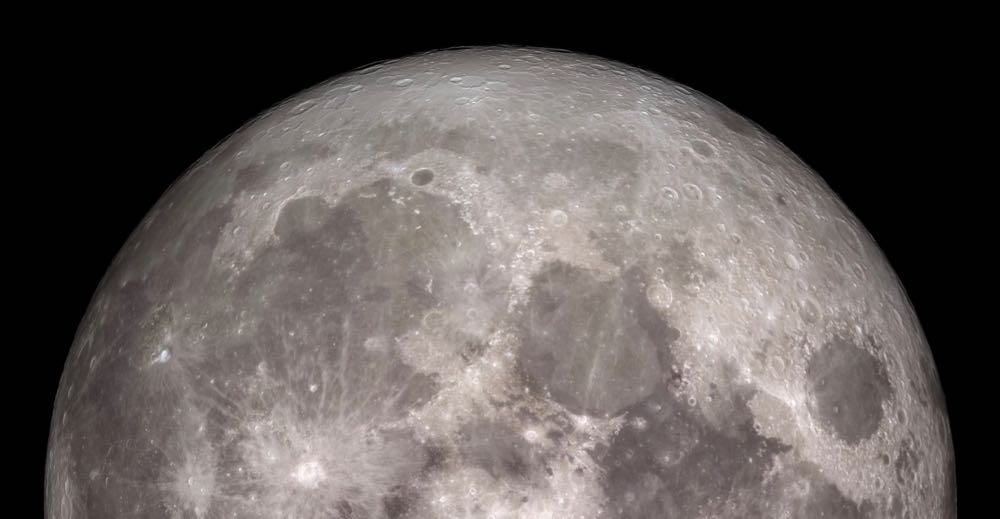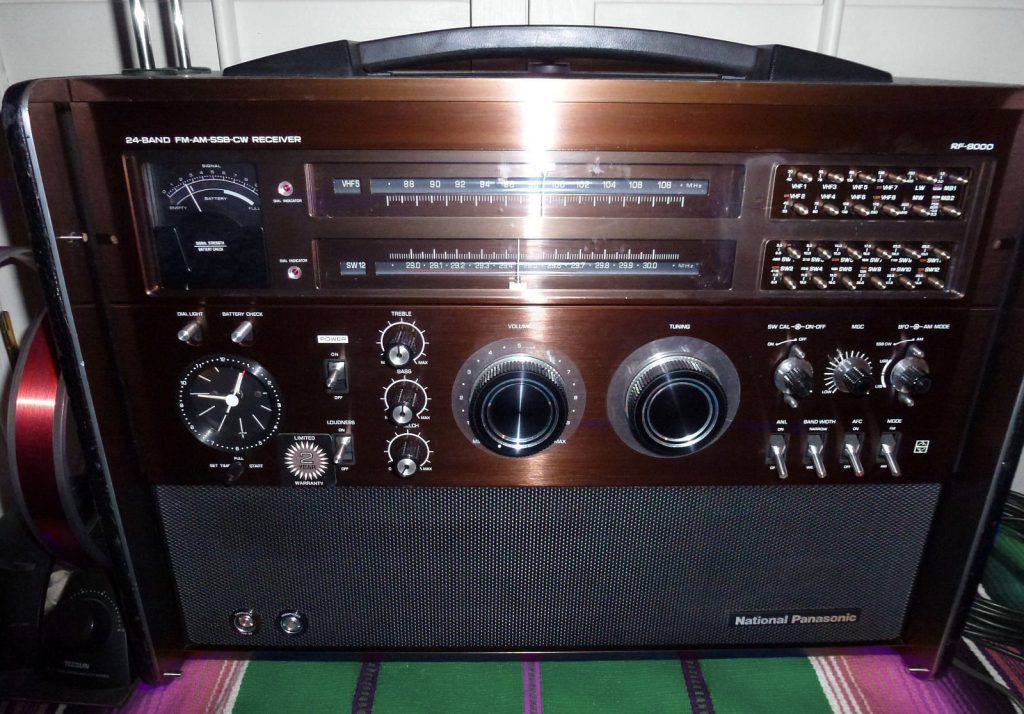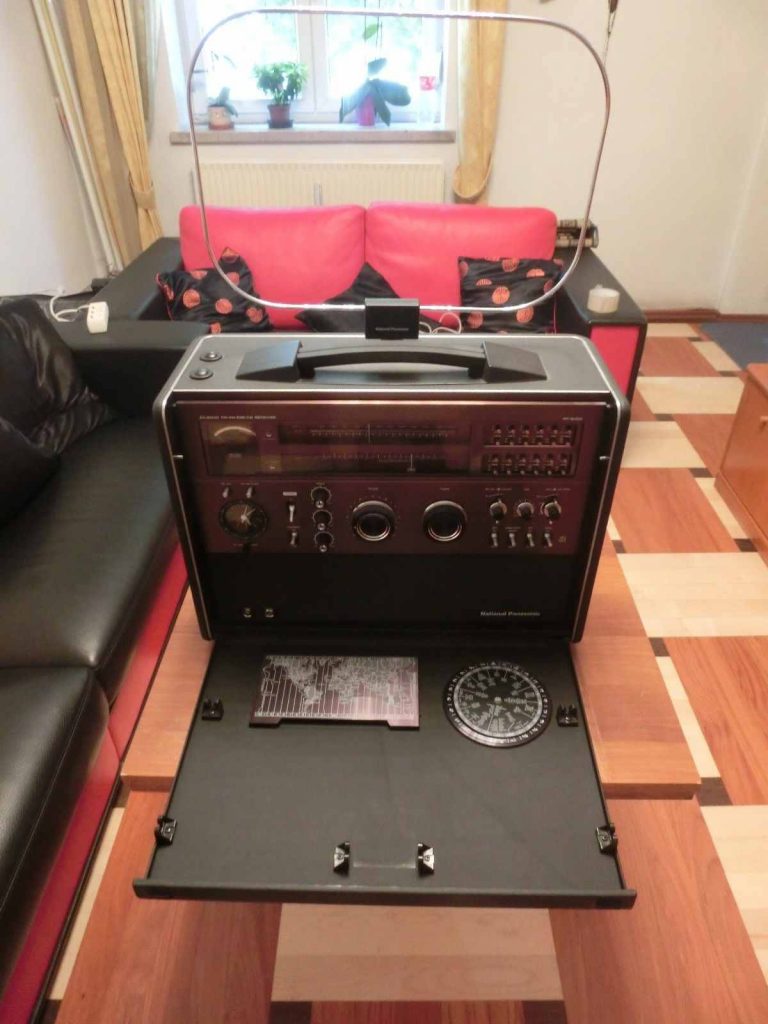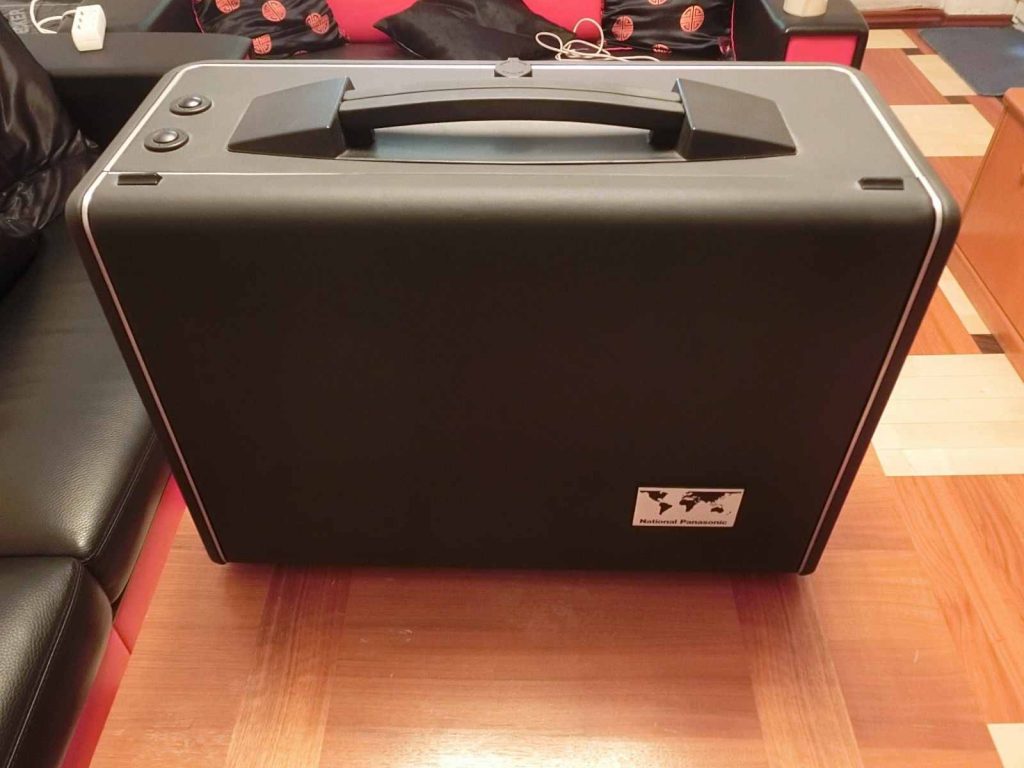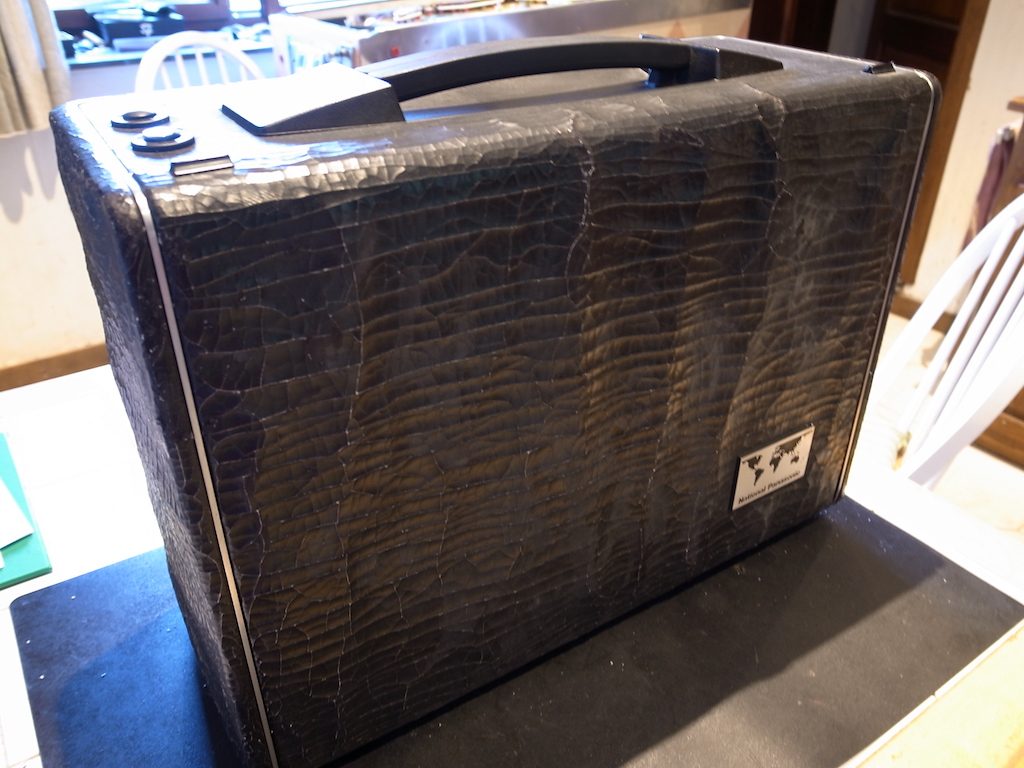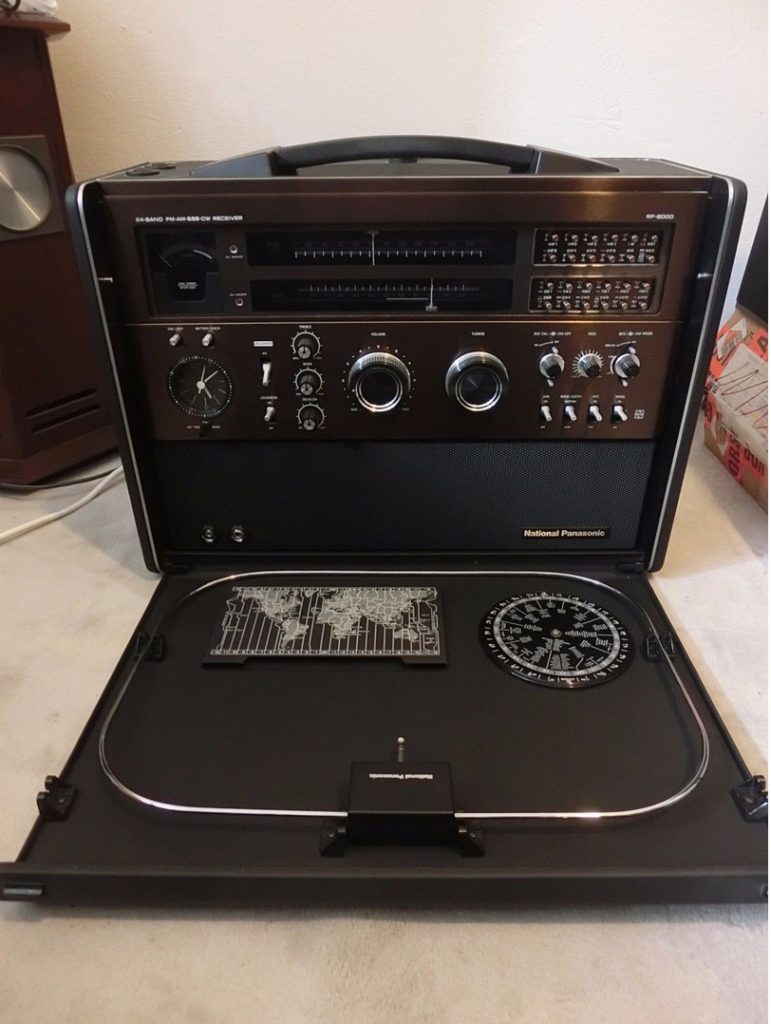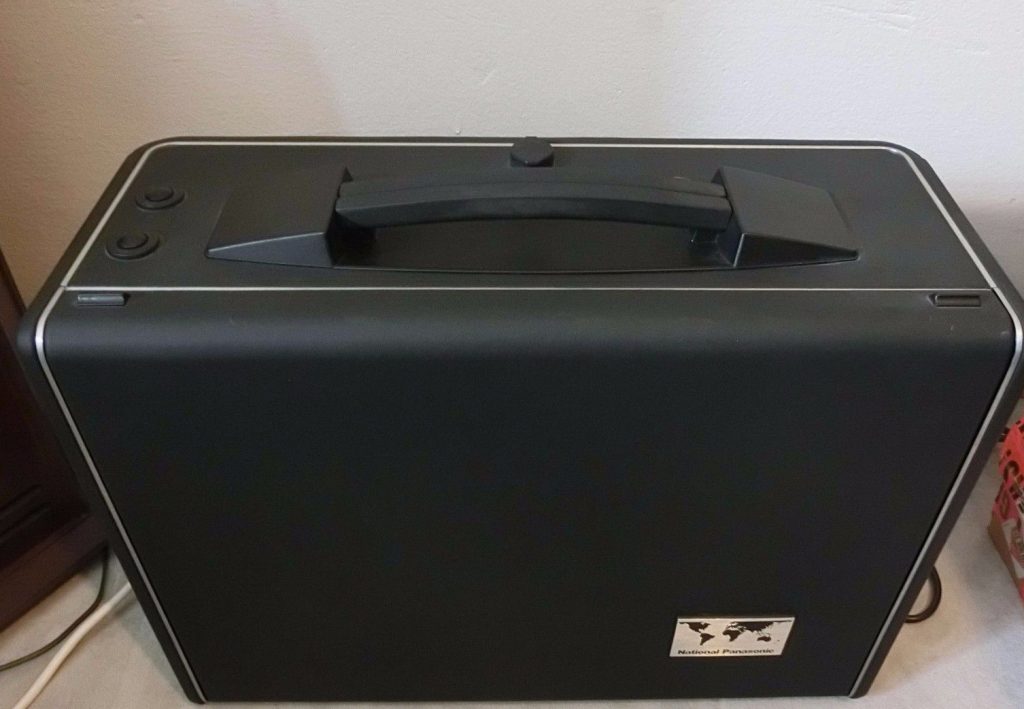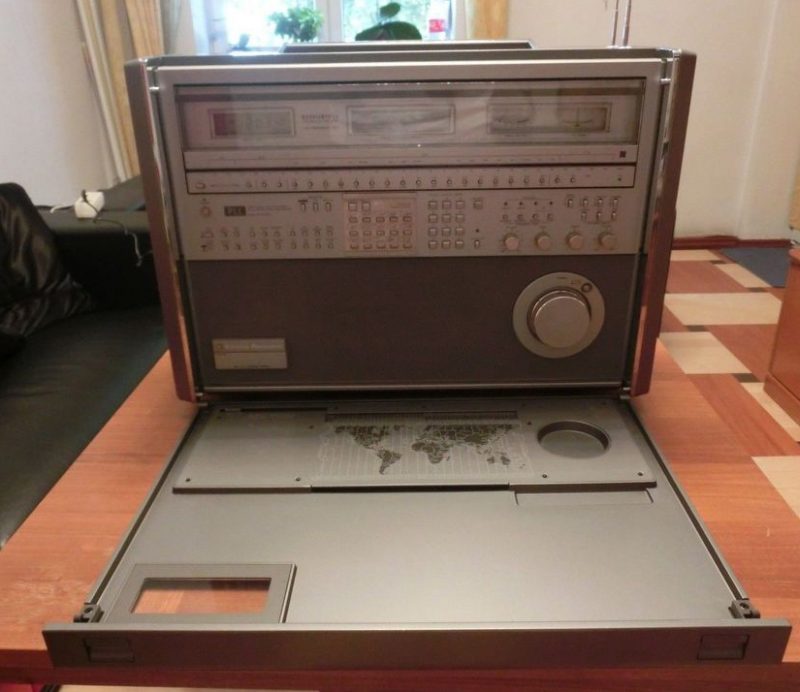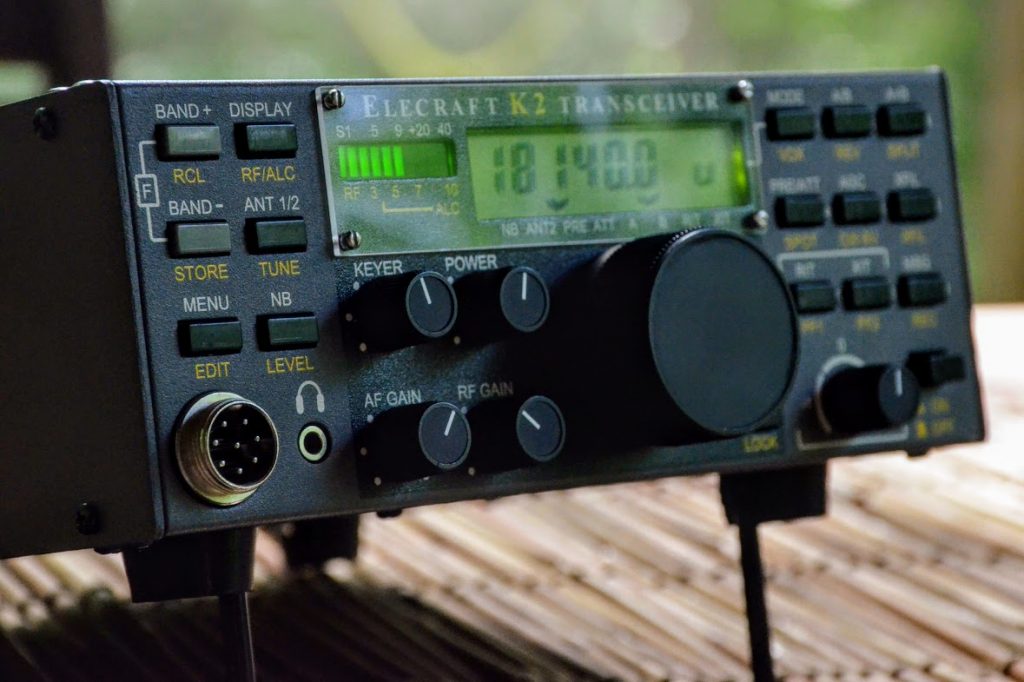Many thanks to SWLing Post contributor, Paul Evans, who notes that R&L’s price on the Icom IC-7300 transceiver is currently $948.89 with discounts and coupons.
Category Archives: Ham Radio
“NASA considers this 80-year-old radio buff part of the astronaut family”
(Source: ABC News via Michael Bird)
To NASA personnel, he is VK5ZAI. To his neighbours at Pinks Beach, a small coastal town in South Australia, he goes by Tony.
In his 30-year association with the US space agency, Tony Hutchison has been called upon to help in times of crisis, moderate calls between astronauts and their families, and run a worldwide schools program.
He’s shared a beer with first commanders, had barbecues with mission specialists, and watched the space shuttle launch from the bleachers at Kennedy Space Centre.
Looking back, it’s a life he never expected.
Mr Hutchison, 80, fell in love with radio at age 10, had his amateur radio licence by 21, and became involved with satellite communication a few years later.
In October 1992 he made his first contact in space — cosmonaut Anatoly Solovyev onboard the Mir space station.
“You could talk up to them as they passed over and they’d talk back to you.”
He became good friends with one of them, Aleksandr Serebrov.
“He would call me probably a couple times a week as he passed over. Of course they keep to Russian time, which is almost the opposite time to us, so it would be in the middle of the night and Alex would call.”
NASA eventually caught on and had Mr Hutchison doing communications for Andy Thomas while he was onboard Mir.[…]
Final review of the CommRadio CTX-10 QRP general coverage transceiver
Earlier this year I published what I called an “initial” review of the CommRadio CTX-10 QRP transceiver, promising an eventual final review. The reason for this is that I sensed there were important CTX-10 updates on the horizon, and I wanted to re-evaluate the rig once the upgrades had been implemented through firmware.
This final review builds upon the initial review––think of it as the second installment, or “Part 2″––so if you’re considering the purchase of a CTX-10 and haven’t read the previous post about it, please do read the initial review first.
Upgrades
As anticipated, via simple at-home firmware updates, since my initial review the CTX-10 has now been upgraded and tweaked a number of times. [Click here to view all of the documented firmware updates and notes at CommRadio.]
I’ve been very pleased with the attention CommRadio has paid to their customer feedback on some of the most important requests.
Instead of reiterating what I wrote in the initial review, I’ll jump straight into the upgrades.
Operating split
At time of posting my initial review, the CTX-10 didn’t have A/B VFOs. This was my primary gripe about the CTX-10, because without A/B VFOs, there was no way to operate split, which meant that you could not work DX stations that use split to manage large pileups. This is actually a really important feature for a QRP radio because during split operation, a pileup is pulled apart across a few kHz of bandwidth, thus giving a 10-watt signal a better chance of being heard through a collection of legal-limit signals.
On June 10, 2019, CommRadio released a firmware package that added A/B VFOs and the ability to operate split to the CTX-10.
Even though there are only a limited number of buttons on the front panel, it’s incredibly simple to enter into split mode:
- Chose the frequency and mode;
- Hold the STEP button for one second or more, then release. You’ll then see a split display indicating the TX and RX frequencies.
- Use the left arrow key [<] to toggle between them.
I do like the clear TX and RX lines, which leave no doubt in the user’s mind what the frequency used for transmitting and receiving is. On some radios, this can be a bit confusing.
Split operation is simple and effective, thus I consider this issue fully resolved.
ATU flexibility
In my initial review, I noted that the CTX-10 ATU needed near-resonant antennas for the ATU to make a strong 1:1 match. Indeed, a number of times I actually used a near-resonant antenna in the field––the EFT Trail-Friendly, for example––and the ATU couldn’t get below a 3:1 match. For what it’s worth, CommRadio states that the CTX-10 can easily handle 3:1.
CommRadio has made modifications to the ATU function, improving the performance of the antenna-tuner algorithm, which had a significant impact on 80 and 60 meters. I’ve also had better luck with a number of field antennas I’ve tried on 40 and 20 meters. Is it as good as the Elecraft KX-series ATUs? No.
Having a built-in ATU on the CTX-10 is certainly a valuable feature in the field. When I need to match a challenging antenna with the CTX-10, I bring my Emtech ZM-2 manual tuner along for the ride.
SSB operation?
There still is no way to adjust the microphone gain control nor microphone compression on the CTX-10. Much like a military or commercial radio, the CTX-10 is optimized for just one style of mic: in its case, the modular MFJ-290MY or Yaesu MH-31A8J handheld mic.
The CTX-10 microphone input has a limiting pre-amplifier with built-in compressor and ambient noise gate–in short, the CTX-10 handles all microphone settings automatically.
Through firmware updates, a number of positive adjustments have been made to the microphone settings:
- the microphone-decay timer has been tweaked so that audio clipping is less of a concern
- audio clarity and gain have been improved
- audio power has been improved resulting in .5 to .75 watts of additional peak power
- microphone audio leveling has been improved
- VOX attack and decay timing has been improved
These are all welcome adjustments.
I would note here, though, that if you plan to use a mic other than the MFJ-290MY or Yaesu MH-31A8J handheld mics, you will have a limited means of adjusting the mic parameters unless you have an external mic EQ. A number of readers, for example, have asked about using their Heil boom headset with the AD-1-YM cable adapter on the CTX-10. Boom headsets are a wonderful tool for field operation because they free your hands to log contacts. As for using boom headsets on the CTX-10, since I don’t have the appropriate adapter, I can’t speak to this. But since you can’t control mic gain, it might take time to learn how to position the boom mic and adjust your voice level for optimum performance.
CW operation
As mentioned in our initial review, the CTX-10 does not support QSK/full break-in operation. Rather, the CTX-10 uses a traditional relay for switching between transmit and receive. During CW operations, you’ll hear a relay click when switching from TX to RX and back again.
The CW hang time delay on the CTX-10 is not currently adjustable. For high-speed CW ops that prefer a faster relay recovery, I suspect this could be an annoyance.
There have been recent CTX-10 firmware upgrades that have helped solve issues found with CW keyer timing in early units. I found the timing issues were mainly present while sending high-speed CW (25 WPM+). My buddy Vlado (N3CZ) put the CTX-10 through some high speed tests, and was pleased with the results overall.
I will reiterate here that the CTX-10 lacks other controls many CW operators appreciate. Currently, the CTX-10 lacks a sidetone control; as a result, you cannot change the sidetone volume/tone, nor can you turn it off. I continue to hope that CommRadio will fix this quirk via a future firmware upgrade.
The CTX-10’s built-in CW keyer does not currently support iambic keying. Meaning, when both levers of a dual paddle are closed simultaneously (squeezed), it will not send a series of alternating dots and dashes. I imagine this could be addressed in a future firmware update.
Additionally, without re-wiring your paddle, you can’t change which side of your paddle sends ‘dits’ and which sends ‘dahs.’ A minor con, for sure–still, most modern QRP transceivers allow you this flexibility.
Revisiting the basic feature set
Let’s be clear: as I stated at length in my initial review, the CommRadio CTX-10 was designed around simple operation, like one might expect from a military or commercial channelized radio. I know ham radio operators and preparedness enthusiasts who prefer this approach to gear design, and they will appreciate this CTX-10 design philosophy.
Still, the CTX-10 lacks many of the features and adjustments you’d typically find on a QRP transceiver in its price class. Instead, the CTX-10 was designed to handle many of these adjustments automatically.
The CTX-10 still has no separate RF gain control. The CTX-10’s RF gain is directly tied to the three AGC settings (slow, medium, and fast). While I believe it does a fine job of adjusting RF gain, I do ride an RF gain control a lot during noisy summer conditions, and miss this feature.
The CTX-10 still has no passband (PBT) control, notch filter, or noise blanker––all features I’d normally expect in a QRP radio at this price level.
There are no CW (os SSB) memory keyers. I wouldn’t expect these, as I believe only the Elecraft KX2 and KX3 sport this feature in this price class of QRP radios.
Also, the ARRL lab reports of the CTX-10 are found in the July 2019 issue of QST (Bob Allison, WB1GCM) noted:
Though adequately sensitive, its third-order IMD and blocking gain compression dynamic ranges, as measured in our laboratory, are more suited to casual operation with antennas of modest gain.
Even with the AGC disabled, one or more strong, adjacent signals will result in the reduction of speaker volume, and I was unable to measure the reciprocal mixing dynamic range (RMDR).
The dynamic range was reported as 58 dB, which is a very low number. Blocking was 65 dB.
Update, 25 Nov 2020: Rob Sherwood recently tested and added the CTX-10 to his receiver test data table.
 Out of his comprehensive table which includes vintage radios, the CTX-10 scored the lowest of all of them sorted by third-order dynamic range narrow spaced. It is literally at the bottom of his list: at time of posting, number 146 out of 146 tested radios. Rob concluded that an out-of-passband signal that is approximately S9 will start blocking the radio. Click here for his full notes (PDF).
Out of his comprehensive table which includes vintage radios, the CTX-10 scored the lowest of all of them sorted by third-order dynamic range narrow spaced. It is literally at the bottom of his list: at time of posting, number 146 out of 146 tested radios. Rob concluded that an out-of-passband signal that is approximately S9 will start blocking the radio. Click here for his full notes (PDF).
The CTX-10 doesn’t really have the tool set or receiver performance to cope well with contests or DX conditions.
Please note: as with most firmware-based radios, some missing features could potentially be added in future firmware upgrades. If one of these items is keeping you from purchasing the CTX-10, please contact CommRadio and inquire.
Is the CTX-10 for you?
With the most recent upgrades, CommRadio has solved the major issues that kept me from recommending it in my initial review. I still feel there are more capable portable transceivers for the $1,000 US price.
The addition of split operation was especially key for me, as I do operate split. The more nuanced adjustments to the CW keyer, an extra feature to prevent the radio from accidentally turning on while in transit, and the adjustments to the mic algorithm, all make this radio more pleasant to operate at home or (especially) in the field.
As I mentioned in the initial review, the CTX-10 owner is one who operates casually and values a very simple, straightforward radio. Those who want a sturdy, no-frills, set-it-and-forget-it rig. If that’s you, take a closer look at the CTX-10: it may just suit your needs if you’re not planning on using it on Field Day or during RF-dense contest environments.
If, however, you’re looking for a full-featured QRP radio with many of the features and nuanced adjustments you’d expect in the shack, check out the Yaesu FT-818, Elecraft KX2, Elecraft KX3, lab599 TX-500, or the Icom IC-705. All of these rigs are excellent.
The two major advantages of the CTX-10 over competitors are:
- the ability to charge the internal batteries from almost any voltage source, and
- a higher TX duty cycle (without needing to add external heat sinks).
I believe the CTX-10 will have appeal for radio enthusiasts who value these characteristics:
- All-in-one-box portability with no extra wired accessory components
- Best-in-class internal battery life
- Best-in-class intelligent battery charging
- Digital modes like FT-8 and the ability to operate them in the field from internal batteries for extended periods of time
- Very few manual adjustments
- Broadcast listening, as the CTX-10 is also a broadcast receiver
- Best-in-class hardware
The CTX-10’s overall construction and components are, as I’ve said, near mil-spec. While the CTX-10 isn’t weatherized or waterproof––no more than any of its current competitors (save the TX-500)––the construction is top-shelf, for sure. It should run for decades without need of repair.
Although I can’t recommend to the CTX-10 for serious radio operators, it is built like a tank, and has a simple feature set for field operation. It’s also designed and manufactured right here in the USA. All the better.
Click here to check out the CTX-10 at CommRadio.
Click here to check price and availability at Universal Radio.
Do you enjoy the SWLing Post?
Please consider supporting us via Patreon or our Coffee Fund!
Your support makes articles like this one possible. Thank you!
Paul’s report from the UK’s National Hamfest
Many thanks to SWLing Post contributor, Paul W4/VP9KF, who shares the following report from the UK’s National Hamfest:
Your travelling foreign correspondent took in a visit to the UK’s National Hamfest held in Newark, Notts.
We arrived right on opening time (10am) and were the first in the door.
There was a ‘rush’ to the SDRPlay stand because they were giving away some nice FLASH drives to the first 25 people to get there. The author managed to get one and later found it was a) fast b) pre-loaded with software for all things SDRPlay. They were busy showing the new diversity software amongst other things.
bhi had some new hardware and I took the chance to thank them for a prize won in the W5KUB Xenia draws.
The hall was pretty empty (this was the second day and a Saturday). Noticeable was that some products were already sold out and on back order [such as the amazing nanoVNA].
It’s a shadow of the former Leicester Show which was the precursor to this event with a lot less parts on sale.
I had a long chat with Eric of Elecraft while twiddling with the K4 and suggested some improvements to the button usage, which he said would be tested in use. A date of the ‘beginning of the year’ for first shipments was mentioned and that the first batch would be ‘large’ [much more than 100] followed by smaller batches. Components are on order, some of which are on long lead times (and have to arrive in good shape for surface mount assembly down the line).
The K4 was ‘playing’ the 7 Area QSO Party on several bands and most controls were operable. This was streaming from an IQ recording and an RF modulator straight into the rig. Just exactly how close this was ‘to the original sound’ and TRUE performance of the rig and/or software is
to be seen.
The weather was fine for the show (although patchy – XYLs reported that it poured with rain back in Nottingham itself!). Turnout was very disappointing and a lot of grey hair was to be seen in the one (yes one) Hall Building.
73,
Paul W4/VP9KF [and G4BKI]
Thank you so much for the report, Paul. I do want to make a pilgrimage to the UK’s National Hamfest one year–any excuse to visit my home-away-from-home country!
Al Williams’ Hackaday article about Moon Bounce
(Source: Southgate ARC)
Al Williams WD5GNR writes on Hackaday about bouncing amateur radio signals off the moon
One of the great things about ham radio is that isn’t just one hobby. Some people like to chit chat, some like to work foreign countries, some prepare for emergencies, and there are several space-related activities. There are hundreds of different kinds of activities to choose from.
Just one is moonbounce, and [Ham Radio DX] decided to replicate a feat many hams have done over the years: communicate with someone far away by bouncing signals from the moon.
Read his post at
https://hackaday.com/2019/10/01/bouncing-signals-off-the-moon/
Guest Post: Paolo’s Tips For Avoiding Internet Scams
Many thanks to SWLing Post contributor, Paolo Viappiani (SWL I1-11437), who shares the following guest post:
Some Tips For Avoiding Internet Scams
by Paolo Viappiani – SWL I1-11437
Recently, I have been amazed by the growing number of frauds that foul up the radio market on the Internet (I was scammed too), so I decided to write a post in order to help anyone who is interested in buying anything on the web.
First, it’s worth saying that most scam attempts involve high-quality items that are offered at surprisingly low prices. One of the most significant examples involves some rare (and discontinued) high-end radios by National Panasonic, typically the RF-8000 and RF-9000 models. In this post, I make an example of the RF-8000, but scams also concern radios of other brands..
Generally speaking, a number of advertisements on the most known advertising/classifieds sites (Quoka.de and ebay-kleinanzeigen.de in Germany, Subito.it, Kijiji and AAAnnunci.it in Italy, Le Bon Coin in France, ComoFicho in Spain, etc.) are mirrors for larks only, and we have to pay a great attention in order not to be scammed.
But… how can we recognize a scam?
The most common scams use the following techniques:
- The scammer advertises a very rare radio in like-new condition at an unbelievably low price. The buyer does not want to miss the bargain, so he contacts the seller and promptly transfers the money to him without further ado, but after that he waits in vain for the delivery of his item.
- High quality radios offered very cheap. If you contact the seller, the item is suddenly abroad. The alleged seller then proposes to handle the purchase through a “trust company”. The radio should be paid for in advance and the amount sent via cash transfer, but after that you never hear anything from the seller again.
- Alternatively, the buyer is requested to to deposit the money to the eBay company account to get the product. But the account is fake (really eBay has no “COMPANY ACCOUNT” and never handles private transactions–!), so the buyer loses his money and receives nothing in return.
Please also notice that often the fraudulent sellers offer a free period for evaluating the item, saying that if you do not like the device, you can send it back. Please don’t fall into this trap, it is only one of the means the scammers use to entice you to purchase, but it is not true at all!
In the following section I’ll recount some examples of real scams concerning the National Panasonic RF-8000 and RF-9000 radios (but, as I already mentioned, the scams involve many other radios and also high-quality electronic or electro-acoustic devices).
One of the most prevalent (and very dangerous) scams concerning the RF-8000 radio is (was) perpetrated by a Portuguese seller who offered (for about 2.300 Euro on the AAAnnunci.it and Quoka.de websites) a very nice appearing radio, look at the photos below.
Really a radio in like-new conditions, uh?
But it is just a trap: most of the Panasonic RF-8000 radios have the leather covers on all sides cracked like crocodile skin (look at the image below); only a very few units still have the covers in pristine condition and for sure they cannot be found at cheap prices!
Incidentally, all the pictures used by that scammer (including the two shown in the first two pictures above) were stolen from an old eBay advertisement of October 2018 and that wonderful appearing RF-8000 was sold to a radio collector in China for about $ 5,000 USD.
But the same images also recently appeared on some European advertisement websites (in Italy and in Germany too); if you ask for info, you’ll be contacted soon by a seller from Portugal who offers to handle the purchase through a “trust company” of his confidence, named TrafCargo (beware of this, it is a convincing but fake website!).
Then, the seller requests that the amount for the radio and its shipping costs be sent via a bank wire transfer to the fake transportation company.
After that you never hear anything from the seller again.
Very similar scams are also found in various advertisement/classified websites (Quoka.de, ComoFicho.com etc.), look at the images below as examples. If such items are offered cheap, it is for sure a scam:
A similar attempt of fraud is commonly perpetrated by other people, including a female seller from Spain. As you might suspect, she offers something that looks like a real bargain, but it’s only a scam. After you have asked for info on the product, you receive a message in which it is specified that the item is located abroad and you are asked to deposit money to a fake “eBay” account (note that eBay does not accept any payment outside their site!).
In order to be more persuasive, often the scammer attaches a copy of his/her passport of other identity documentation in order to appear as a serious seller–please do not trust them however!
Also, beware of the fake “eBay invoice” that sometimes the scammers send, and for anything that involves eBay, contact the eBay helpdesk, ask for specific info and report them the fraud eventually.
In the following section you’ll find some useful advice on recognizing scams and making secure and safe purchases on the Internet:
- Always beware whenever the item is in a place (or a country) different from the one that was specified in the advertisement; also there is a valid reason for suspicion when the name or the address of the advertiser does not match the seller’s ones;
- Do not completely trust the pictures sent by the seller (they could be stolen from the Internet) and don’t forget to proceed to a “Google Image” search in order to find the sources of similar ones;
- Always ask the seller for some specific pictures or videos (radio precisely tuned on various frequencies and/or modes) and do not accept any runarounds about it (“you can try the radio for some days”, etc.); normally the scammers do not have the items they offer at hand, so they are not able to satisfy your precise requests.
- Never pay for the item in advance by rechargeable cards like Western Union or other non-secure ways of payment. Also the Bank Transfer (Wire Transfer) is not a secure form of payment in order to avoid frauds;
- Always ask the seller for payment by PayPal “Goods and Services” (NOT “Send money to friends”). If you choose Goods and Services, your purchase will be fully covered by the PayPal warranty.
And, in the case that you are a victim of a scam anyway, please always report the incident to the Police or the Judiciary of your Country, and don’t forget to also warn the site where the announcement was found.
Following the above advice should be sufficient to avoid any scam. So, good luck on your future web purchases!
This is excellent advice, Paolo. Thank you for sharing your experience!
One of my favorite bits of advice above–and one I use anytime I make a significant purchase via a classifieds website–is to ask the seller for specific photos or a video of the item. As you say, they don’t typically have the item on hand, so can’t comply and will make up excuses. That’s a major red flag!
Another red flag? If it sounds too good to be true, it probably is! Trust your instincts and avoid the hassle and headache.
Post readers: Please share any other advice you have about avoiding radio scams. Have you ever been the victim of a scam? How did it play out? Please comment!
Do you enjoy the SWLing Post?
Please consider supporting us via Patreon or our Coffee Fund!
Your support makes articles like this one possible. Thank you!
Amateur radio connecting without judgement
I think this is a brilliant story from the CBC:
Almost every morning and night, Therese Mair can be found sitting on her favourite chair in her living room, in front of a ham radio.
Mair lives in Georgetown, P.E.I., but by fiddling with a dial and searching through static, she can speak with people from around the world.
On a recent evening, Mair reached someone on a ship in Scotland, who — to her delight — struck up a conversation.
“The main thing I’m hoping for is a connection with somebody else — even just for a few minutes,” Mair said.
“There’s no pressure at all. We’re never going to meet. So it’s just a chance to talk with somebody else from a different part of the world.”
As a self-described introvert living alone in a small town, Mair says amateur radio has opened a social part of her life she didn’t know existed.
It has also allowed her to meet people, free of judgment, she says.
“I don’t think I’m a normal person at all, and so finding ways of connecting with people face-to-face hasn’t always been the most successful,” Mair said.
“Once I come home from work and close my doors, I don’t really communicate with people very much at all. The radio is a way for me to make that connection without being judged at all.”
She first picked up her hobby in 2017, after hearing that ham radios were the only way people in Puerto Rico could communicate in the devastating aftermath of Hurricane Maria.
Mair says speaking with people around the world through her radio reminds her that there are caring people everywhere, “no matter what the news brings.”
“There are all these people around the world; they just want a human connection, just for a few moments, and then that fills you up, makes you feel really good.” she said.
“And then — great. On with the rest of the day.”
Click here to read this story and listen to the interview.

